As I am writing this blog post, my forefathers from past 14 generations, along with a school of “Pretatma”, the disappeared souls with desire for Earthy pleasure have been unleashed from the hell. The smokescreens shall appear in the alleys. This is their night. Are you prepared to treat them with the relish of 14 foliage, the “Chodyo Shaak” as Bengalis would say?
Also read: more travel and culture content on Kolkata!
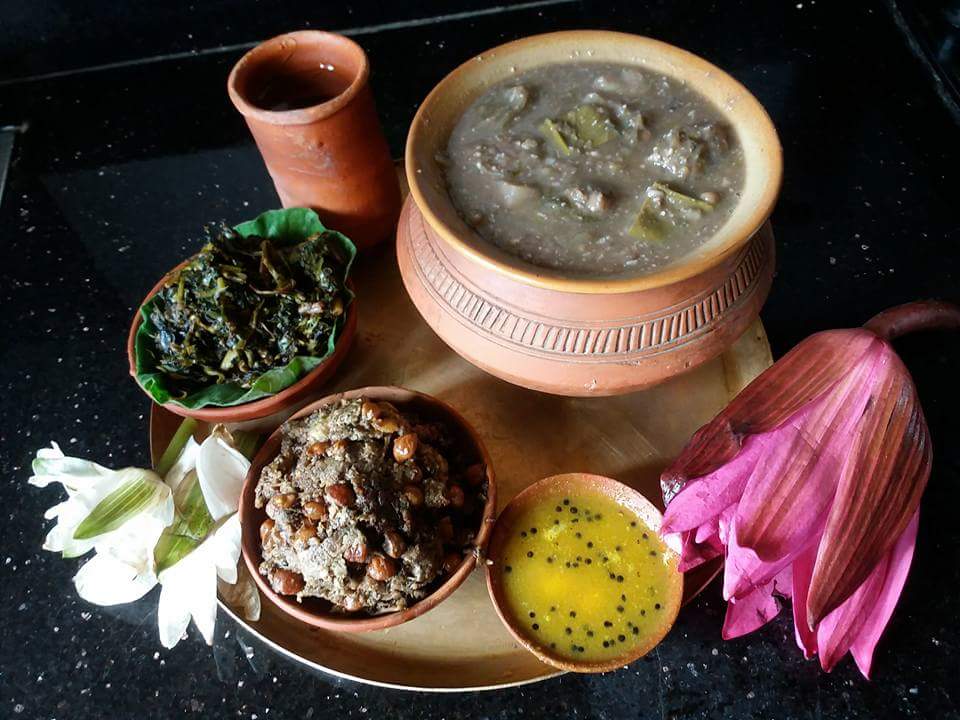
My grandmother is from Borishal, Bangladesh. I can literally see the teenager woman, knee soaked in the pond water by the side of her ancestral home, venturing out to pluck a Shapla. The stem and Root may be used at Garu, the primary vegetable for this Daal, the lentil soup, along with an assortment of different root vegetables, mainly Kochu et al. The lentil used is Matar Daal. They are boiled to perfection and served with a dollop of ghee and grated coconut.
Also read: 50+ pictures of Durgapuja in Kolkata!
Treat the deceased souls with this along with a dish called Chodyo Shaak. 14 different types of foliage, ideally sourced from your courtyard. They are namely, Oal, keu, Beto, Sorisha, Kaalkasunde, Neem, Jayanti,Shaanche, Helencha, Palta, Soulaf, Gulancha, Bhatpata and Shushnishak. Photo courtesy: Sharmishtha Chakki
The whirl pool of local customs observed by Hindus in Indian subcontinent is a dramatic melange of Goddesses seeking revenge, demonstrating immense energy, to the extent of extreme wrath. Often they are worshiped by many school of devotees, namely Kapalikas and Tantriks, whose customs are often not in the line of simpleton citizens and looked at with fear. Well, rituals with human skull and fermented grape juice do have the potential to evoke fear. Cannot really blame.
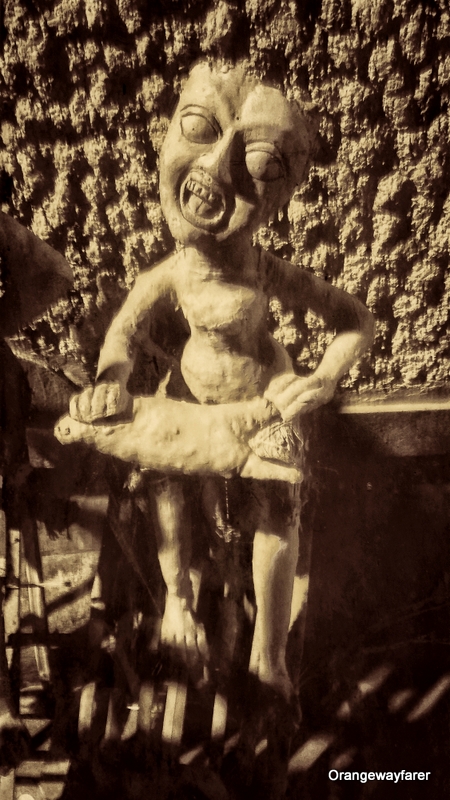
I am recalling the days where Kalipuja festival meant we shall seek out to witness the Dakini and Yoginis, the Shakti consorts of Goddess Kali with awe as Dida will narrate the scariest of fables. How the Dakini shall tear up the fresh and only your teeth shall remain for identification. “Nomo Koro, bhalo kore nomo koro”, She used to advice. Ever since, dakini jogini is the reason why I will look forward for Kalipuja.
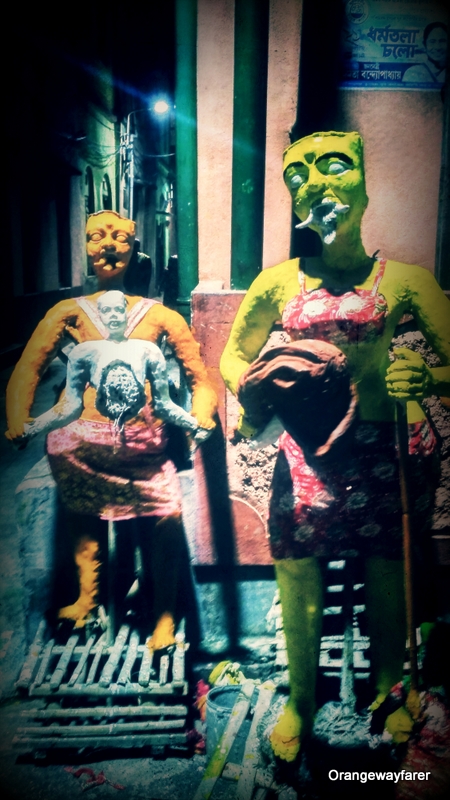
The end of Durgapuja and related melancholy get quickly replaced by Kalipuja, within a fortnight in Kolkata. The mother bird will try her level best to protect the babies, or the nest with tender eggs lest a festive rocket hits the tree. But the festival has to continue. With Patka, Dodoma thankfully getting replaced by soundless fireworks, we have successfully trodden on the path of being more sustainable. However, we have “miles to go.”
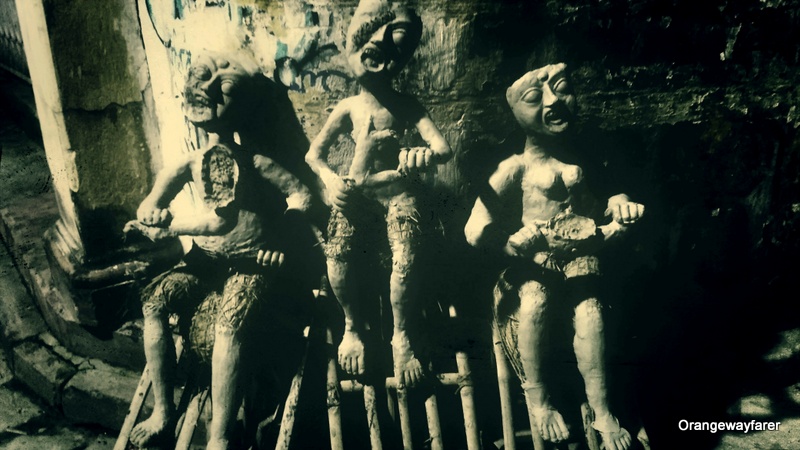
Andhak, the name generating from “Andha”, a blind, showed lust for his mother Durga, resulting in a fierce battle with Shiva. Each of his blood drop gave birth to a new Andhak, Raktabeej (the seed of blood). The weary mother invested all her energy in creating Kali, She started an unforeseen savage war. Her consorts were the Dakini and Yogini, the gory ones, almost gravediggers.
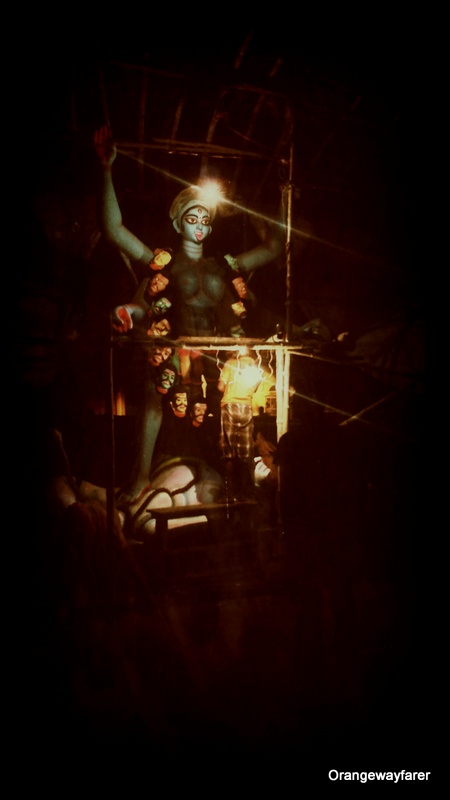
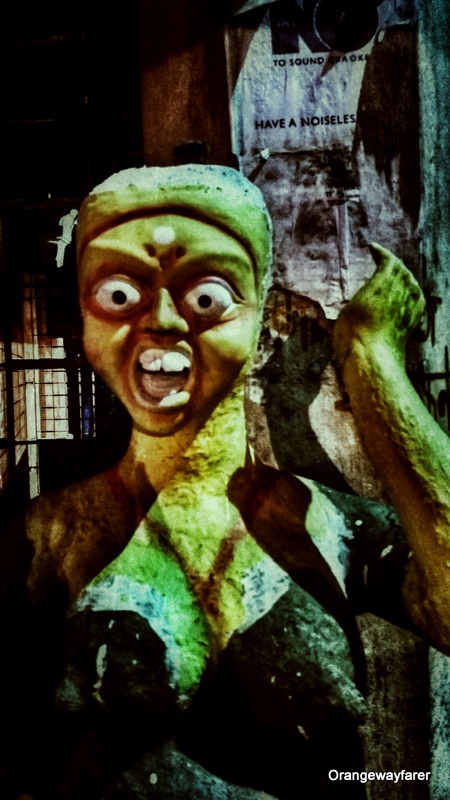
Dakini, Yogini, much like the goddess we worship, has largely become the girl next door for us. Almost every other Kali Mandap in Kolkata shall make you bump into one at the entrance. Dying has become just another way of living for them. Unlike the magnificent Dakinis of Khajuraho temple or that of the same from Orissa, they are very much local, in the way they dress, the food they savor, the marriage attire and every bit of detail. Somewhere between standing in front of them with nose drippings and wide eyes and holding Dida’s hand tighter, to missing the Dakinis to the extent of writing a blog post, I grew up.
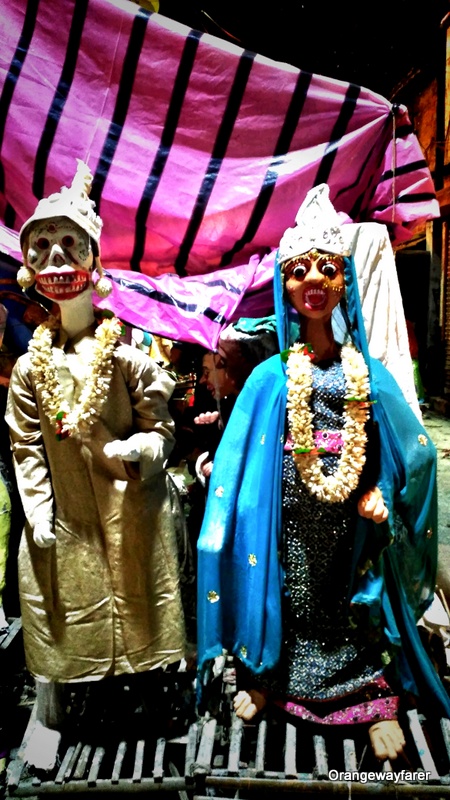
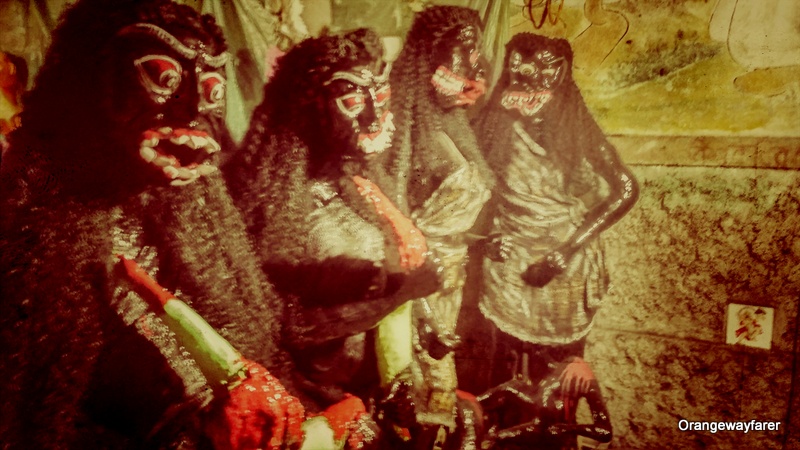
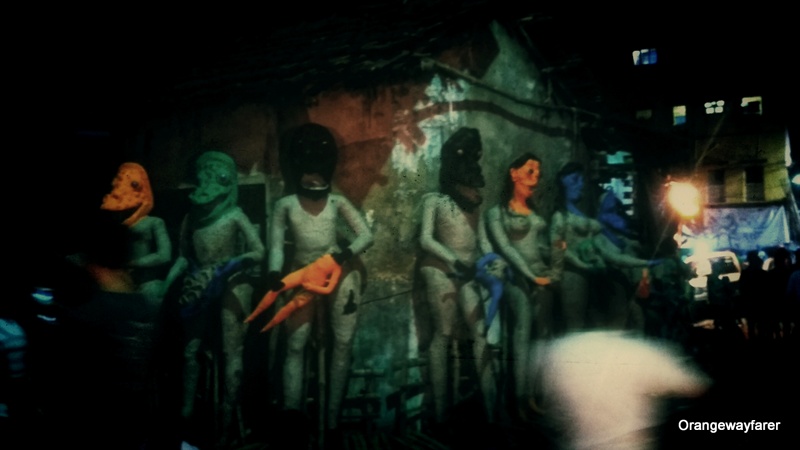
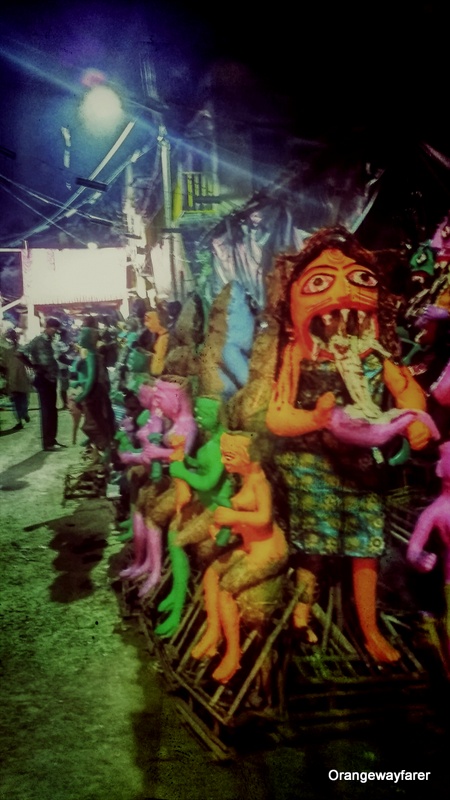
I hear Kolkata’s Kumortuli has become a Dakini Yogini Avenue these days.The idols are all decked up and ready to be shipped across the globe. Amrita Gagan Chakraborty, a true blue North Kolkatan has sent across the pictures for your amusement. She is one among the many writers I adore. Read her blog and marvel!
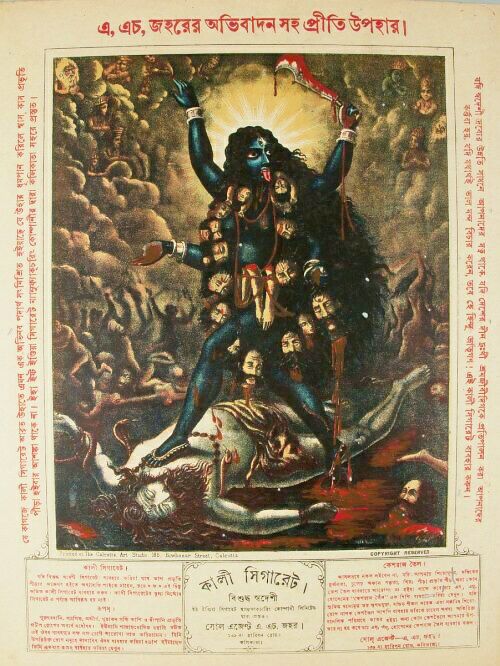
ইহা ইস্ট-ইন্ডিয়া সিগারেট ম্যানুফ্যাকচারিং কোম্পানি’র দ্বারা কলিকাতা শহরে প্রস্তুত।।” An old school advertisement of cigarettes branded as Kali Cigarette that claims to cause no harm to your respiratory system!
Want to get real time updates of my travels?
Get updates and read additional stories on the Orange Wayfarer Facebook page.
Follow Orange Wayfarer on Instagram.
Follow Orange Wayfarer on Twitter.
You may also subscribe to my weekly newsletter!
Enjoyed reading this post, specially the part “Nomo koro, bhalo kore nomo koro” made me remember of my childhood days with Dida and Thakuma.
Very nicely described.
🙂 🙂 thank you so much! It is purely because of my Dida and her storytelling abilities I remember my childhood days with fondness!
Interesting post. However, a yogini should not be fear inducing, at least literally. A yogini is one who regularly practices yoga.
Of course in another sense those who come to such a woman with bad intention might get afraid to do something wrong.
Of course, yogini as described by he Hindu shashtra and by the inscription on the traditional Temples is anything but scary. However the whole point here is how the Bengali culture has adopted the idea and assimilated the same with culture. Local rituals and customs always triumphs by appeal. And lately I find them endearing. For example, look at the skeleton brides!
Please edit out the word ‘year’ from the second sentence of my comment.
öncelikle dökülmenin yoğun olduğu bölgeye, sonrasında tüm saç ve saç derisine yaklaşık bir dakika dairesel hareketlerlemasaj yapılarak uygulanır, durulanmaz.
Firstly the region where the pouring is intense, afterwards it is applied to all the hair and hair for about one minute by circular movements and do not rinse… This is what Google translated for me :/
the picture shown in cigerette ad is of Bamakai. the Kali with the left foot put foroward. this image is worshipped in households(grihastya bari). quite strange.